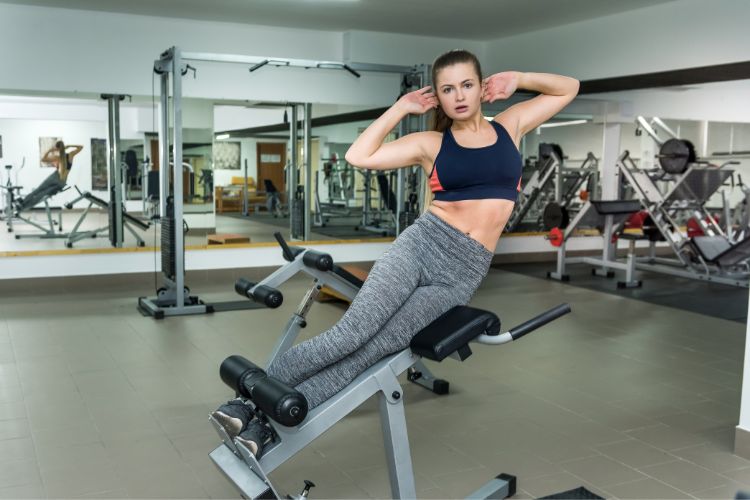How To Do Pull Ups For Beginners A Guide for Women
Mastering the pull-ups can feel intimidating, especially for beginners. Yet, it’s one of the best exercises for building upper body strength, targeting the back, shoulders, arms, and core. This comprehensive guide will take you through everything you need to know to get started with pull-ups, even if you’re starting from scratch.
How To Do Pull-Ups For Beginners A Step-by-Step Guide
Why Pull-Ups Are Important for Beginners
Pull-ups are a compound exercise, meaning they work multiple muscle groups simultaneously. When done correctly, pull-ups strengthen the latissimus dorsi (lats), biceps, trapezius, and core muscles. They also enhance grip strength, improve posture, and help build functional strength, which benefits other exercises and daily activities.
Getting Started with Pull Ups For Beginners
Step 1: Assessing Your Current Strength Level
Before starting any pull-up training, it’s essential to understand your current strength level. Can you hold yourself up on a bar? Do you have any shoulder or back injuries? Knowing where you are helps create a realistic plan.
- Test Your Grip Strength: Grip strength is fundamental to pull-ups. Try hanging from a pull-up bar for as long as possible to assess your starting grip strength.
- Attempt a Flex Hang: A flex hang involves pulling yourself up as high as you can and holding the position. This will help gauge your current upper body and grip strength.
Step 2: Choosing the Right Equipment
Selecting the right pull-up bar is crucial. Options range from door-mounted bars to freestanding setups. For pull ups for beginners, a stable and sturdy bar is essential.
- Doorway Pull-Up Bar: Ideal for home use, but ensure it’s properly secured.
- Freestanding Pull-Up Bar: These are great for stability and can support various exercises.
Mastering the Pull-Up Technique
Step 3: Building Up to Your First Pull-Up
Most pull ups for beginners will need a gradual approach. Pull-ups require a unique combination of strength and technique, which can be developed through various preparatory exercises.
Exercise 1: Dead Hangs
Dead hangs build grip strength and get you comfortable with supporting your body weight.
- How to Do It: Grab the pull-up bar with an overhand grip, hands slightly wider than shoulder-width apart. Hang with your arms fully extended and your feet off the ground.
- Goal: Start with 10-15 seconds and aim to progress to 30-60 seconds over time.
Exercise 2: Scapular Pulls
Scapular pulls help activate the back muscles, essential for initiating the pull-up movement.
- How to Do It: Hang from the bar with your arms extended. Without bending your elbows, pull your shoulder blades down and back, then release.
- Repetitions: Aim for 8-10 reps, focusing on the movement rather than speed.
Exercise 3: Negative Pull-Ups
Negative pull-ups build strength by working on the downward (eccentric) phase of the pull-up.
- How to Do It: Use a box or step to start in the top position of a pull-up with your chin above the bar. Slowly lower yourself down in a controlled manner.
- Repetitions: Start with 3-5 repetitions and gradually work up to 10-12 reps.
Exercise 4: Assisted Pull Ups For Beginners With Bands
Resistance bands can help support your weight, allowing you to focus on the movement pattern.
- How to Do It: Loop a resistance band around the bar and place one foot or knee in the band. Pull yourself up, focusing on your form.
- Repetitions: Aim for 3 sets of 5-10 assisted pull-ups.
Exercise 5: Inverted Rows
Inverted rows are a great way to build the back muscles needed for pull-ups.
- How to Do It: Set up a bar at waist height. Lie underneath it, grip the bar with an overhand grip, and pull your chest toward the bar.
- Repetitions: 3 sets of 8-12 reps.
Proper Form for Pull-Ups
Step 4: Learning the Pull-Up Movement
Understanding the mechanics of a pull-up can help improve your form and efficiency.
- Grip: Grab the bar with an overhand grip, hands slightly wider than shoulder-width apart.
- Engage the Core: Keep your core tight to avoid swinging.
- Pull with the Back: Focus on pulling with your back, not just your arms. Imagine pulling the bar down toward you.
- Full Range of Motion: Aim to bring your chin above the bar and lower yourself until your arms are fully extended.
Structuring a Beginners Pull-Ups Workout
Step 5: Creating a Routine for Pull-Up Progression
Consistency is key in progressing to your first pull ups for beginners. Here’s a simple, beginner-friendly routine:
- Warm-Up: 5-10 minutes of light cardio and dynamic stretching.
- Dead Hangs: 3 sets of 20-30 seconds
- Scapular Pulls: 3 sets of 8-10 reps
- Negative Pull-Ups: 3 sets of 3-5 reps
- Assisted Pull-Ups with Bands: 3 sets of 5-10 reps
- Inverted Rows: 3 sets of 8-12 reps
Perform this workout 2-3 times per week, allowing at least a day for recovery in between sessions.
Avoiding Common Mistakes
Step 6: Common Mistakes to Watch For
Beginners often make mistakes that can lead to bad habits or even injuries. Avoid these common pitfalls:
- Using Momentum: Swinging your body to pull up diminishes the exercise’s effectiveness and can cause injury.
- Neglecting Core Engagement: A weak core can make it harder to pull yourself up smoothly.
- Ignoring Form: Keeping a controlled form ensures you’re targeting the right muscles and prevents unnecessary strain.
Tracking Progress and Staying Motivated With Pull Ups For Beginners
Step 7: Measuring Your Progress
Tracking your progress can keep you motivated and help you adjust your workout as you improve. Here are some ways to track:
- Log Dead Hang Time: See how long you can hold over time.
- Track Negative Pull-Up Control: Aim to slow down each descent by 1-2 seconds over time.
- Increase Assisted Pull-Ups: Gradually move to lighter resistance bands as you improve.
Celebrate Small Wins
Reaching even the smallest milestones can boost motivation. Celebrate the first time you hold a 30-second dead hang or complete a set of assisted pull-ups without stopping.
Advanced Tips for When You’re Ready
Once you’ve mastered a pull-up, consider advancing your training with different variations:
Weighted Pull-Ups For Beginners
Attach weights to your waist for an added challenge, building strength and endurance.
Wide-Grip Pull-Ups
A wider grip emphasizes the lats even more, helping you build a broader back.
Close-Grip Pull-Ups
These focus more on the biceps and upper back muscles, giving a different dimension to your pull-up routine.
Learning how to do pull-ups as beginners requires dedication, patience, and persistence. Start with fundamental exercises to build strength, consistently practice proper form, and track your progress. With time, you’ll build the strength needed to conquer pull-ups and benefit from one of the most effective upper body exercises.
Most Recommended





